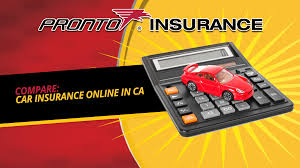Car insurance policies can vary widely in terms of coverage, cost, and benefits. Here’s a comparison of the main types of car insurance and factors to consider when choosing the right policy for you:
1. Liability Coverage:
- What it covers: Pays for damages or injuries you cause to others in an accident. This includes bodily injury liability and property damage liability.
- Pros:
- Often required by law in most states.
- Usually the least expensive type of car insurance.
- Cons:
- Does not cover your own damages or injuries.
- Limited protection if the accident causes significant damage or injuries.
- Ideal For: Drivers on a tight budget, or those with older cars that aren’t worth repairing in case of an accident.
2. Collision Coverage:
- What it covers: Pays for damage to your car in case of an accident, regardless of who is at fault.
- Pros:
- Helps cover repairs or replacement of your car after an accident.
- Cons:
- Higher premiums than liability coverage.
- May not be worth the cost if your car has a low value.
- Ideal For: Drivers with newer or more valuable cars that would be expensive to repair or replace.
3. Comprehensive Coverage:
- What it covers: Pays for damage to your car from non-accident-related incidents, like theft, fire, vandalism, or natural disasters.
- Pros:
- Provides protection for a wide range of incidents beyond accidents.
- Cons:
- Can be expensive.
- Might not be necessary for older cars with lower value.
- Ideal For: Drivers who live in areas prone to natural disasters, theft, or other risks, or those with high-value vehicles.

4. Personal Injury Protection (PIP) or Medical Payments (MedPay):
- What it covers: Pays for medical expenses for you and your passengers after an accident, regardless of fault.
- Pros:
- Provides quick access to medical coverage after an accident.
- Required in no-fault states.
- Cons:
- Adds to the cost of your insurance.
- Some coverage may overlap with health insurance.
- Ideal For: Drivers in no-fault states or those without sufficient health insurance.
5. Uninsured/Underinsured Motorist Coverage:
- What it covers: Pays for your medical expenses or car repairs if you’re in an accident with a driver who has little or no insurance.
- Pros:
- Offers additional protection if the other driver is uninsured or underinsured.
- Cons:
- Increases your premium.
- May not be necessary if your state has strong insurance requirements.
- Ideal For: Drivers in areas with a high number of uninsured motorists.
Factors to Consider When Comparing Car Insurance:
- State Requirements: Some states have minimum coverage requirements, while others require specific coverage like PIP.
- Deductibles: Higher deductibles result in lower premiums but more out-of-pocket costs in the event of a claim.
- Vehicle Value: Older cars may not need comprehensive or collision coverage, as the cost of repairs may exceed the car’s value.
- Driving Habits: If you drive frequently or in high-risk areas, more comprehensive coverage may be worth the extra cost.
- Discounts: Many insurers offer discounts for safe driving, bundling policies, or installing anti-theft devices.
Conclusion:
- Liability coverage is a basic and affordable option required in most states.
- Collision and comprehensive coverage provide more protection but come at a higher cost, making them ideal for newer or more valuable cars.
- PIP and uninsured motorist coverage offer additional layers of protection but may not be necessary for everyone.
Choosing the right car insurance involves balancing your budget with your need for protection.